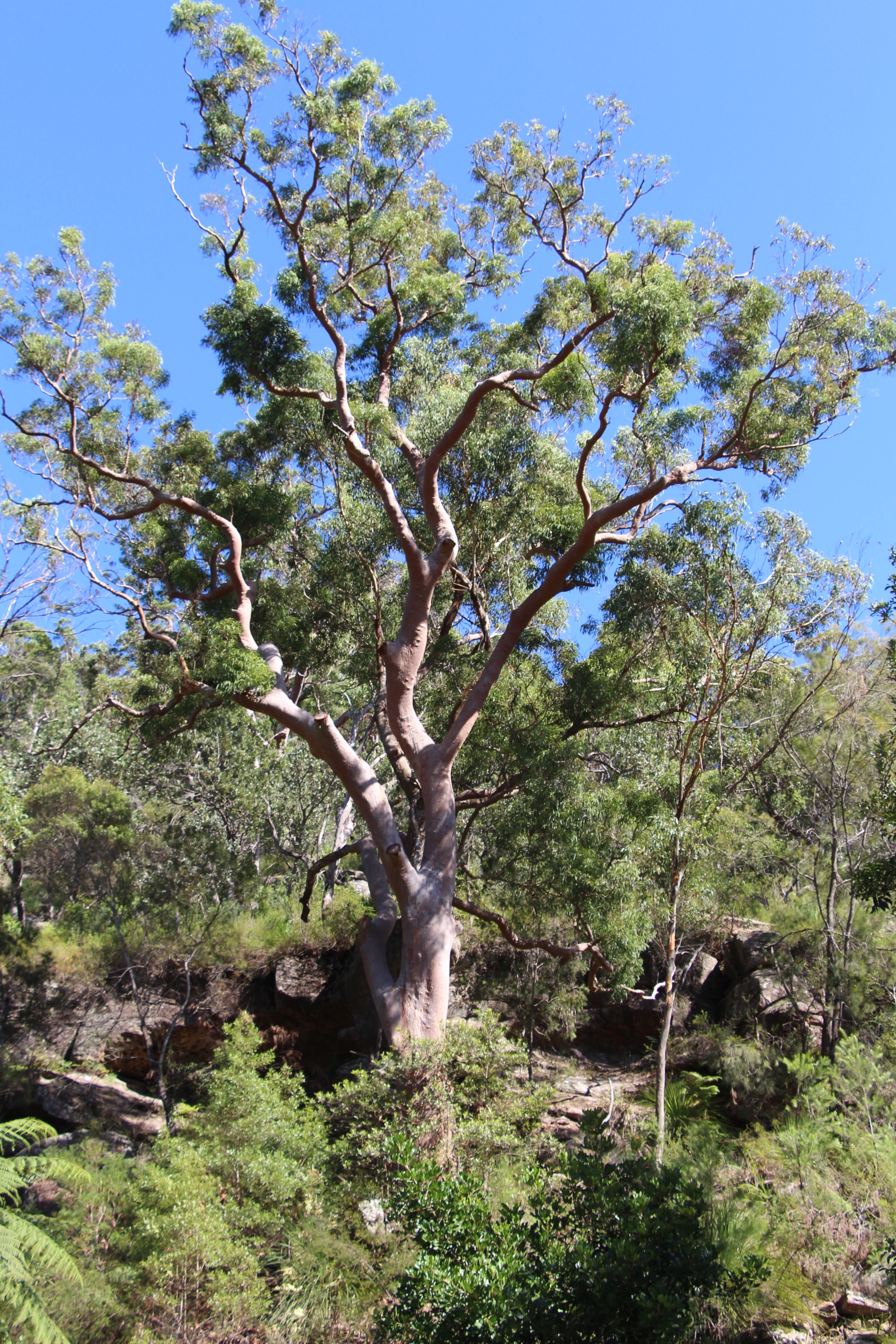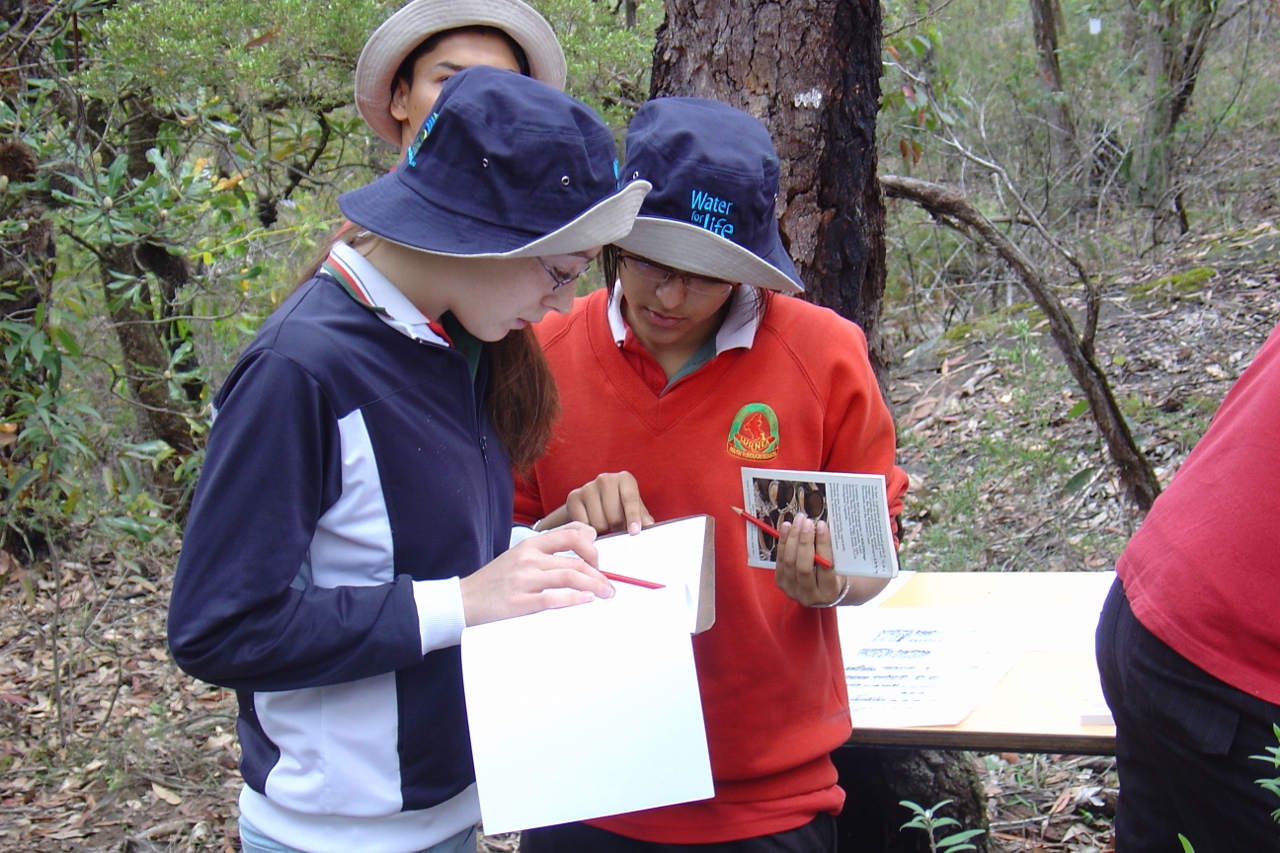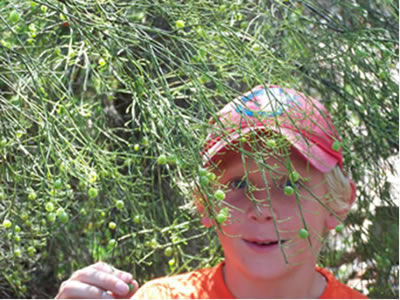Introduction

Sclerophyll refers to the hard, relatively woody leaves of common plants such as Eucalyptus (up to 30 metres in height), Banksia and the prickly Hakea. Sydney red gums (Angophora costata), Scribbly gums (Eucalyptus haemastoma) and Red Bloodwoods (Corymbia gummifera) are examples the trees typically found in sclerophyll forest.
Plant species
Dry Sclerophyll forests are characterised by their scenic landscapes and varied flora. Between March and December there is a flood of colour as the great variety of understorey plants come into flower. They include Wattles (Acacia ulicifolia, Acacia oxycedrus, Acacia suaveolens), Boronia (Boronia ledifolia), Banksias (Banksia serrata, Banksia spinulosa, Banksia ericifolia), Pink wax flower (Eriostemon australasius), Large Wedge-pea flowers (Gompholobium grandiflorum), Handsome flat-pea (Platylobium formosum), Broad –leaved Geebung (Persoonia levis), Drumsticks (Isopogon anemonifolius), Grevillea (Grevillea buxifolia, Grevillea speciosa, Grevillea sericea), Fringe-lilly (Thysanotus juncifolius), Grass trees (Xanthorrhoea arborea) and the NSW floral emblem, Waratah (Telopea speciosissima).
Habitat features
Dry Sclerophyll vegetation usually has hard, short and often spiky leaves. These characteristics are closely associated with low soil fertility (rather than low rainfall/soil moisture, even though this is also normally the case). The forest floor generally has a sparse ground cover of sedges and grasses are rare. Bushfires play a vital role in regeneration of Dry Sclerophyll forests. The frequency, intensity, time of the year that the fire occurs (‘fire regime’) has an enormous effect on the composition and structure of these forests.
Location
Dry Sclerophyll forests are found on the Coastal Plains, Ranges and Western Slopes of eastern New South Wales and represent south-east Australia’s last remaining areas of wilderness. They are well represented in National Parks including Greater Blue Mountains, Brisbane Water, Bouddi, Ku-ring-gai Chase and Royal National Park.
Range
One quarter of the vegetation classes mapped in New South Wales are types of Dry Sclerophyll forests, reflecting the variable topography, geology, climate and geographic range of these communities.
Soil nutrients
Dry Sclerophyll forests grow on dry, sandy soils that are among the world’s least fertile. Plants grow slowly in low nutrient conditions. To cope with this some species have developed symbiotic relationships with bacteria and fungi that can take nutrients out of the soil and share them with the plant. Others have root systems with efficient nutrient uptake.
The low nutrient levels make Dry Sclerophyll forests less useful for farming. As a result much of these ecosystems have survived relatively intact.
Habitat variation
These landscapes are rugged and provide a range of habitats from cool, rocky overhangs and steep gullies to dry and exposed rocky ridges. Soils are generally acidic and low in nutrients. Rainfall varies from 1000mm to over 1300mm/year.
Google Earth
An example of a Dry Sclerophyll forest lies in the area around the Royal National Park Environmental Education centre on Google Earth. To move out of street view level and look at the wider area click the yellow person icon in the bottom right hand corner. This resource will only work in the Google Chrome browser.
Significance
Diversity
Often seeming bland and lifeless to the casual observer, a Dry Sclerophyll forest is highly complex and diverse, with up to twice as many different plant species per square metre as a rainforest. Animal diversity is also high. The generally harsher conditions for existence within a dry sclerophyll forest promote speciation and diversity. Every tiny variation in soil, light, or moisture levels offers a niche for a new species to evolve. In contrast, environments with rich soils and plenty of water tend to favour a few species which can take advantage of them most rapidly.
Many species listed as threatened or endangered in NSW exist within a Dry Sclerophyll forest including koalas, masked owls, squirrel gliders, tiger quolls, and many plant species including Spider flowers (Grevillea oldei). Protected areas of this vegetation type provide effective biodiversity reserves for the future.
Recreation
The diverse topography of Dry Sclerophyll forests that can be found adjacent to the large population centres of NSW (for example Blue Mountains National Park) provide excellent recreational value to the urban residents. Activities such as bushwalking, birdwatching and rock climbing are common.
Conservation
Human impacts
The most significant threats to the Dry Sclerophyll forest community and the individual species represented within it are fragmentation or degradation from urban and agricultural intensification. Actions such as land clearing and modifying of vegetation, altered fire and hydrological regimes, grazing pressure, competition or predation from introduced pests, disease, introduction of weed species and rising salinity have been identified as threatening processes. Climate change also threatens major potential changes.
Human solutions
The Office of Environment and Heritage has prepared a Priorities Action Statement to promote the recovery of threatened species and the abatement of key threatening processes in New South Wales. The Priorities Action Statement identifies a number of unique recovery plans and threat abatement strategies. These are the main guiding tools for threatened species recovery in New South Wales.
Environmental education centres

Wooglemai
Wooglemai Environmental Education Centre is located on the edge of Nattai National Park/ Greater Blue Mountains National Park. It offers a range of environmental education programs utilising the Dry Sclerophyll forest as a resource. Excursions for Primary aged students address outcomes from Science & Technology and Geography syllabuses including content about native flora and fauna, life cycles, Aboriginal studies and the use of National Parks.
Rumbalara
Rumbalara Environmental Education Centre conducts Stage 2 programs in Sydney coastal dry sclerophyll forest at Bouddi, Brisbane Water and Wyrrabalong National Parks. These programs focus on the Aboriginal heritage, the management of national parks and the enjoyment they provide.
Alternative sites
Other Environmental Education Centres providing access to dry sclerophyll forests include: Thalgarrah (New England), Field of Mars (Northern Sydney), Gibberagong (Northern Sydney), Longneck Lagoon (Western Sydney), Warrumbungles National Park, Royal National Park, Red Hill.
Further information

Useful links
-
Native vegetation (NSW Office of Environment and heritage)
-
National Parks (NSW National Parks and Wildlife Service)
-
Threatened species (NSW Office of Environment and heritage)
Suggested reading
For detailed information on dry sclerophyll and many other vegetation types, you can’t go past Ocean shores to desert dunes; The native vegetation of NSW and the ACT by David Keith, published by the NSW Department of Environment and Climate Change (2004).